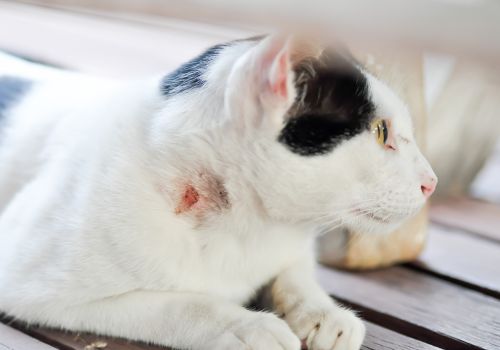Isn't it just the best when your furry friend is scampering around, full of life and curiosity? But, oh boy, sometimes that sense of adventure can land them in a bit of a pickle, like dealing with abscesses. Yup, these icky pockets of infection can pop up when bacteria manage to get sealed into a little wound on your fur baby, like from a bite or scratch. But fear not, we're here to give you the lowdown on spotting and treating these unwelcome wounds!
So, what does an abscess look like?
Well, they can be as small as a pea or big enough to make you go, "Whoa!" They usually feel swollen, warm, and let's be honest, they're no fun for your pet. You might even notice your normally social pet suddenly preferring some alone time in cozy corners. In some cases, the abscess might go rogue and burst open even before other symptoms start showing. Abscesses can appear in the most unexpected spots, like near the anal glands (often mistaken for rectal bleeding) or even below the eye due to a tooth root issue. If it's the latter, don't be surprised if your companion turns down their favorite snack or seems uncomfortable eating.
When it comes to tackling these pesky abscesses, treatment can vary based on their size and complexity. Little ones might just need some medical treatment, while the big and complicated ones could require surgical intervention. This might mean your pet will be sedated or put under general anesthesia to get a drain placed to release the infection. And if it turns out that a troublesome tooth root is the culprit, a simple course of antibiotics won't be enough; the tooth will have to be removed via dental surgery.

Taking Action: What Should You Do
If you suspect an abscess, it's time to get in touch with your vet. Try to arrange a visit within 24 hours.
You might see some fluid draining from the abscess site, but remember it's not the drain itself doing this, but the area around it. Keep this area clean, following your vet's advice.
A good home remedy is to apply a warm compress to the site. Do this twice daily for 3-5 days after your pet's discharge from the hospital. Just soak a clean washcloth in warm water, place it on the abscess, and apply gentle pressure for about 5-10 minutes.
Make sure to wash your hands thoroughly after handling any draining fluids.
Continue giving your pet any prescribed medication according to your vet's instructions. Even if your pet seems better after a few days, complete the course to prevent a relapse.
Until the infection is completely resolved, keep your pet's activities indoor.
Be sure to alert your vet if your pet shows any of the following signs:
- Increased redness or heat at the abscess site
- Failure of the abscess to heal
- A decline in general health
- Loss of appetite for more than 24 hours
Avoid These Mistakes: What NOT to Do
Avoid playing vet by trying to open the abscess yourself.
If your pet isn't in the mood for a compress, don't force it - especially with a disgruntled kitty. Your safety matters too. In such cases, get in touch with your vet for help.
Don't apply medications or human pain relievers, such as Tylenol or Advil, unless specifically directed by your vet. Home remedies might seem tempting, but remember, your pet's health isn't a DIY project!
If you have more questions, the GeniusVets Telehealth platform will give you unlimited access to text and/or video calls with board-certified veterinarians! To learn more click here!
Don't have a vet in your area yet? We can help you find a local veterinarian.


